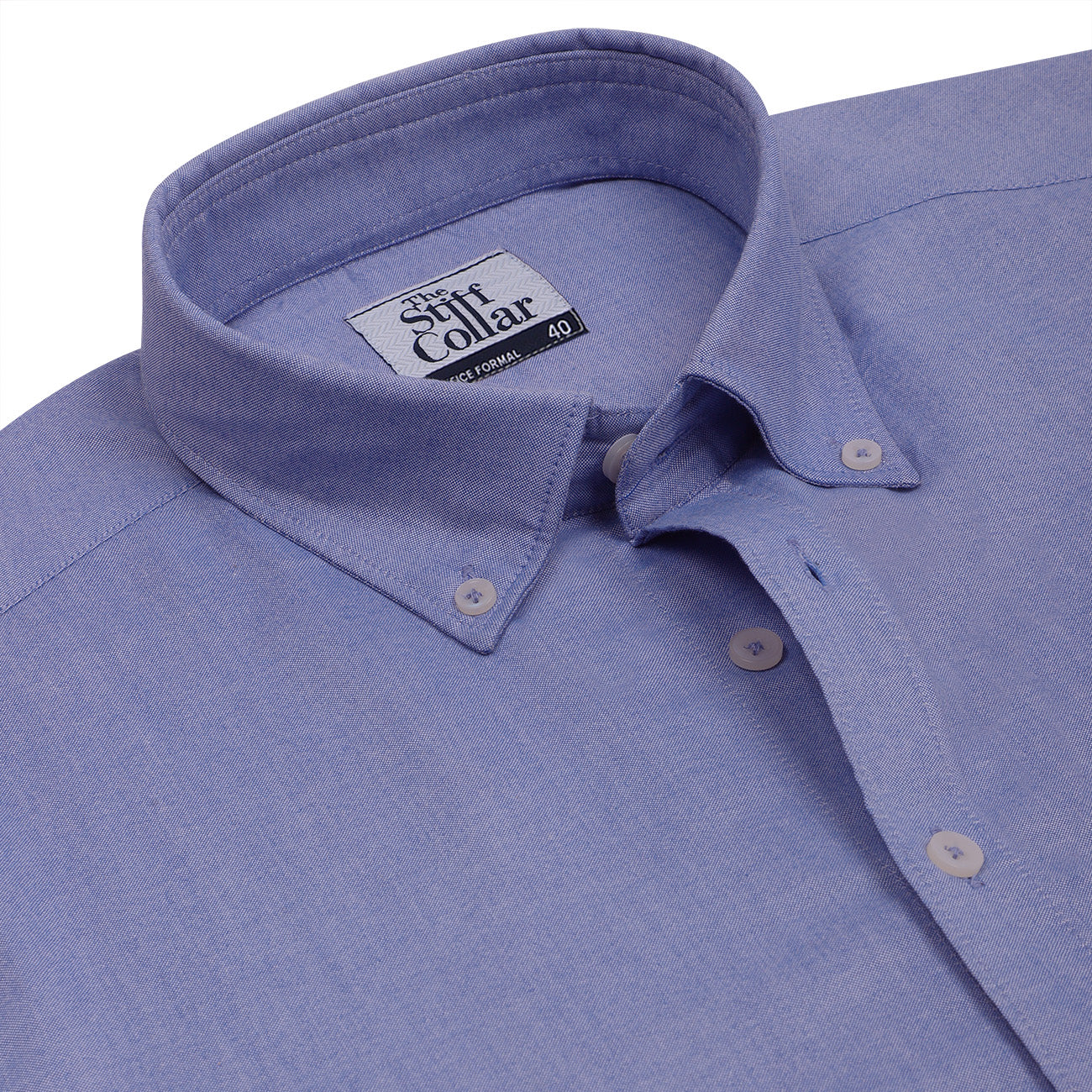There is no definitive answer to this question, it’s like asking 'how long is a piece of string?'. But depending on your occupation and your hobbies, the number of shirts you own will vary. One of the key things to remember is that if you invest in higher quality products then you will need to replace your shirts less often. Premium shirts with higher stitch counts and pure cotton fabric have greater durability and longevity than inexpensive, poorly stitched shirts.
Office goers and businessmen are likely to own a larger number of shirts as this is the attire expected of them. Attending meetings or representing your company requires a certain level of professionalism and formality. For these situations, white or blue shirts are most common, along with pencil stripes, graph checks, and lightweight crisp weaves like dobby or poplin. Shirts worn in a corporate setting are expected to be full sleeve, well ironed, and with a crisp collar. To complete the look, one might have their initials monogrammed on the breast of cuffs, or wear cufflinks. These days, wearing a tie is not so popular, but if you're a attending a particularly important meeting then you may choose to sport a simple tie.

Many people are very comfortable and at ease in casual wear such as jeans, t-shirts, or sweatpants. However, if you are not the kind of person to wear a t-shirt in the evening, or to meet friends, or whilst travelling, then you will likely have a selection of semi formal and casual shirts. Depending on the social occasion you can opt for certain colours, weaves, or fabric weights.
For example, if you’re meeting friends in the evening for dinner or drinks then you might want to consider opting for a darker colour shirt like navy, olive green, black, or grey. Darker colours look good in a satin finish and give a sleek appearance. Another good option is Herringbone weave, or fine checks and stripes. Long sleeves are best for eveningwear, although half sleeves are acceptable if it is hot. Try tucking your shirt in for the added element of sophistication.
If you’re meeting friends at the weekend, or attending an outing, then you will want to go a little more informal. You could do this by wearing half sleeves or rolled up sleeves, or choosing a more textural weave like Oxford, or Chambray. If you're heading outdoors, or meeting many friends in a chaotic setting, then choosing a fabric like linen to help reduce perspiration and discomfort. Due to the informal nature of these kind of get-togethers you could be more playful by choosing a gingham check, a candy stripe, or a tartan check. Brighter colours, patterns, and prints are all acceptable in these environments.
If you’re staying home, or simply popping out to do some shopping or to the cinema, then a casual shirt would be most appropriate. Providing optimum comfort, and a more laidback look. For these occasions consider choosing larger scale patterns like Plaid checks, or wearing a t-shirt with an overshirt. A denim shirt with rolled up sleeves, or worn open over a white t-shirt could also be an option. Stuffy full sleeve shirts with crisp collars should be avoided if the objective is to relax and take it easy. If you're looking for supreme softness, then choose a shirt which is enzyme washed.

Another factor which might influence the number of shirts you have in your wardrobe is the climate. If you live in a place where the weather is fairly consistent throughout the year, then you won't need such a wide variety. However, in India we have a number of different seasons for which we must dress appropriately. For example, in the peak of the summer a linen shirt or a half sleeves shirt would be preferable, and in the monsoon lightweight breathable fabric is essential. Whereas in the winter wearing a heavier weight fabric such as brushed cotton or twill would be sensible.
This last point, relates to personal preference. If you consider yourself a fashionista, then you might want to invest your money in the contents of your wardrobe. If staying up to date with fashion trends is of interest to you, just be sure to keep in mind the effects of 'fast fashion'. Garments should last us many years if they are of good quality and are well maintained. If you are regularly throwing away clothes, consider the impact that this will have on the planet. Excess consumption leads to excess waste, and if proper recycling systems are not in place, then your rejected shirts will likely end up in landfill. Being fashion conscious is ok, but not at the cost of our environment.












